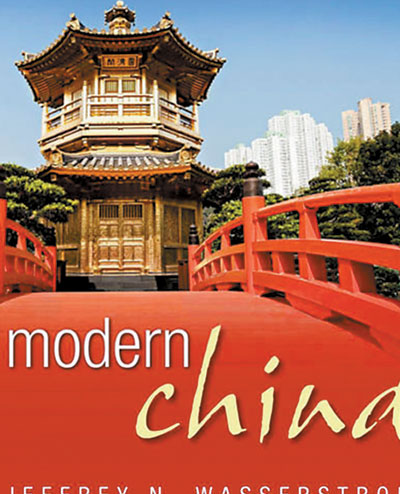
JEFFREY WASSERSTROM says it is a challenge to be a historian of China because it is a country where history always matters. “I think history has always been seen as significant on multiple different levels and is significant in different ways,” the 55-year-old says. The leading American China expert was speaking in the Bedford Hotel in London, where he was appearing at a series of events to launch “The Oxford Illustrated History of Modern China,” of which he is the editor. “One of the first tasks of each new dynasty has been to write a history of the previous one and use the story to explain or justify the new arrangements. The historian therefore has a special role,” he adds. The book, which has taken four years to produce, is the first significant Oxford history of China. Cambridge University, seen as the birthplace of Sinology and where Wade and Giles invented the first Romanization system for Chinese, has its own famous history of China. Oxford wanted it to work on several different levels, he says: “a book that could be used as a text book but also one that is an enjoyable read.” Slightly smaller than a coffee-table format and beautifully illustrated, the book covers the period from 1550 with China in the ascendancy during the late Ming Dynasty (1368-1644) to the present day. “There is a nice arc to that period. It goes from a period when China has a relative centrality and strength in the world to the present, another period of relative centrality and strength. It is a different kind of arc to most modern histories that begin with the Opium Wars around 1850 when China was in decline,” he says. “They (Oxford) originally suggested doing a history from the beginning of time but I thought that was too daunting a prospect.” Wasserstrom, who wrote the introduction and a chapter dealing with the 1990s, himself selected the authors, which include some of the leading writers on China today, such as Rana Mitter, director of the Dickson Poon University of Oxford China Center, and Robert Bickers, who specializes in the so-called humiliation period of the late 19th century. “I gave a list and I also had to convince the authors to do it. I was looking for people who had shown some knack for trade or popular writing.” Although the book is chronological, all of the chapters stand alone in their own right and contain interesting analysis of the period they focus on. Wasserstrom, who is chancellor’s professor of history at the University of California Irvine, is one of the leading academics working on China in the United States. He is perhaps most widely known for his previous well-regarded and insightful book, “China in the 21st Century: What Everyone Needs to Know”; an updated third edition is to be released next year. Wasserstrom’s next major project is going to be a history of the 1900 Boxer Rebellion, which he believes is a much misunderstood period of Chinese history. He says it is still best-known in the West from the 1963 Charlton Heston film, “55 Days at Peking.” “The thing about the Boxer Rebellion was that they didn’t really box and they weren’t really rebels. They were loyalists and they used martial arts. They supported the dynasty and the dynasty decided to use them.” (China Daily) | 
